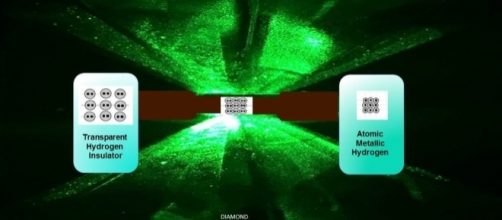Within his experiments, Isaac Silvera and his colleagues used a diamond anvil to compress the hydrogen atoms. In order to measure the pressure within the system, he used a low-pressure laser, but the energy of the laser beam shattered the diamond very easily. After the disappearing of the sample, Silvera said that he intends to recreate the experiment, but urge other scientists to perform the same experiment. During the first experiment, a shiny material appeared between the diamond anvil, but no one is sure if that specific material is really metallic hydrogen.
A historical experiment
One month ago, two researchers from Harvard, Isaac Silvera and Ranga Dias claimed they were able to create a tiny sample of metallic hydrogen by compressing hydrogen atoms in a diamond anvil to an extremely high pressure of 495 Gigapascals. After the announced, many respected scientists who have performed similar experiments expressed their skepticism regarding the paper. They say that Silvera should have been measuring the pressure more than one time. The evolution of pressure during the experiment is crucial for a better understanding of the processes and phenomena involve in the creating of metallic hydrogen.
Why metallic hydrogen is important
In the past eighty years, researchers from all around the world had tried to create metallic hydrogen.
This so-called holy grail of high-pressure psychics can superconduct electricity without resistance at room temperature. The implications would be huge, revolutionizing the electronics and also the way to store and transfer electrical energy for long distances. The real challenge is to find the right combinations of high-pressure and low-temperature, but the installation needed for this are very complicated to build and hard to comprehend.
The future looks bright
If Silvera or other teams will be able to recreate the material, we could assist at a revolution in terms of energy use and distribution. This new alloy could be utilized for more efficient electronics and also better rockets. Until then, we can only wait and hope that this magic material will suddenly appear in the laboratory.

